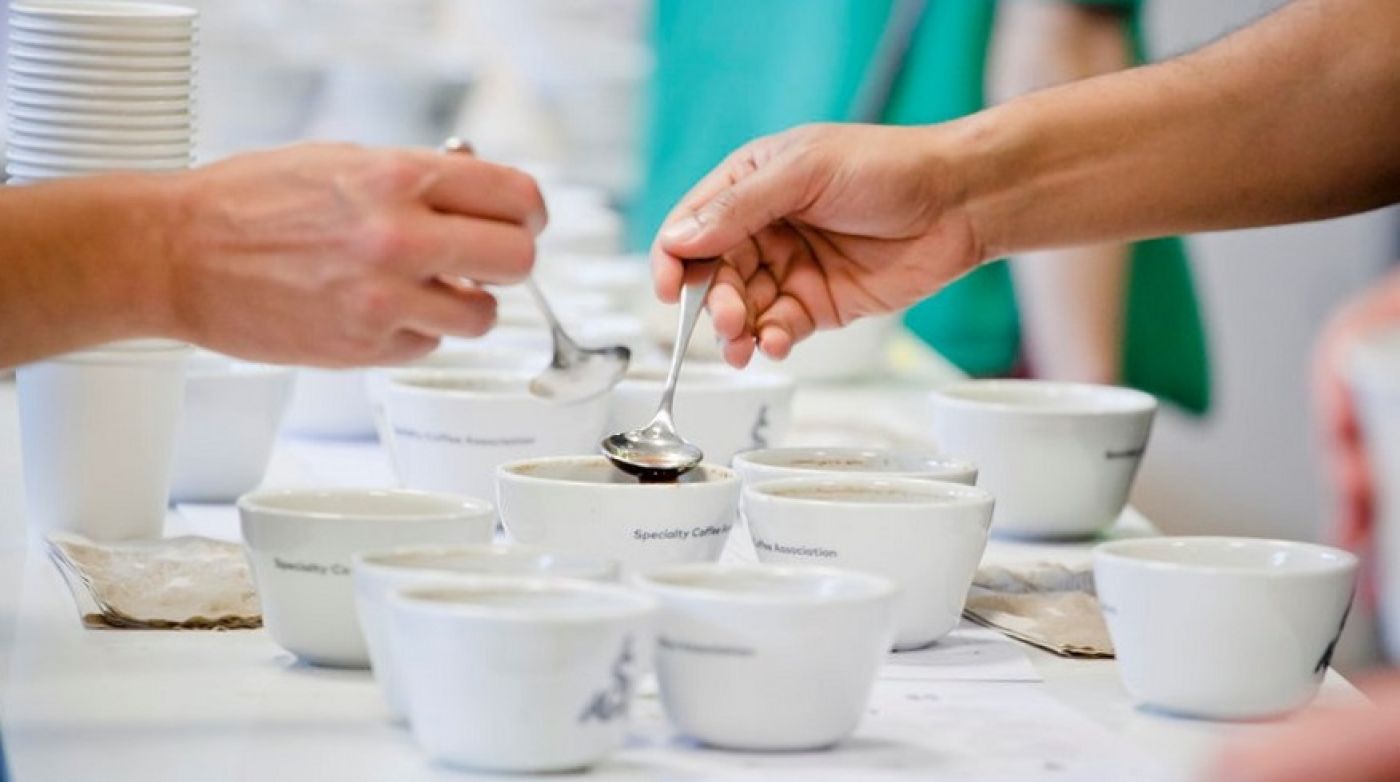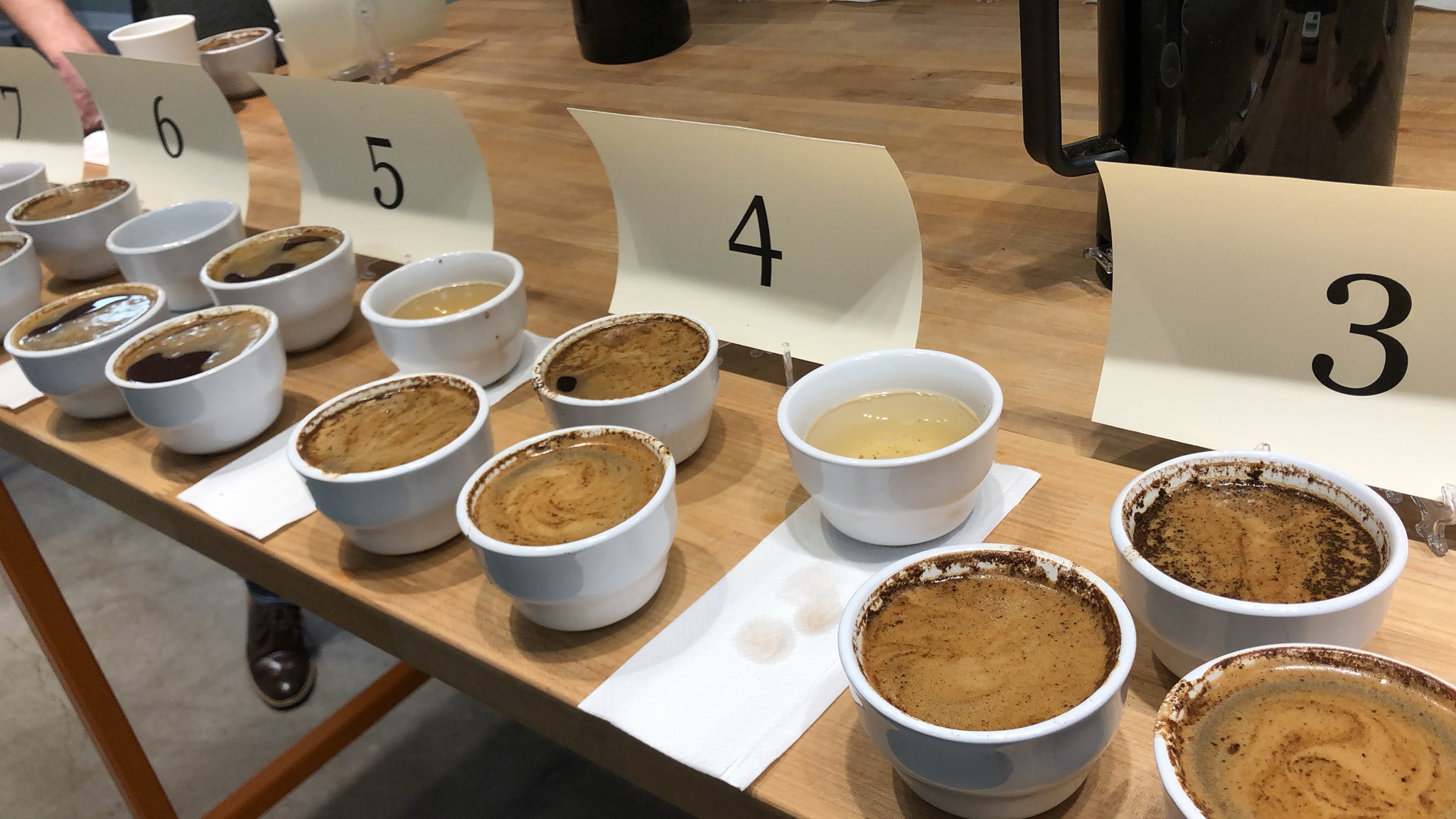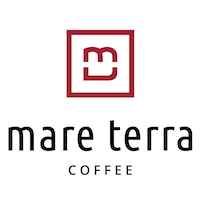
Differences between SCA and COE protocols
After publishing how each coffee is evaluated according to the protocol of the SCA (Specialty Coffee Association) and the protocol of the COE (Cup of Excellence) it is time to analyze what are the differences between both protocols:
What type of coffee is evaluated:
- SCA protocol - used to evaluate any coffee, both commercial and specialty.
- COE protocol - used to evaluate only specialty coffees.
What is the main objective:
- SCA protocol: evaluate, describe and classify coffee.
- COE protocol: evaluate, describe and choose the best coffee of this harvest from this country of origin.
How many cups are tasted per sample and how many samples do we put on the table:
- SCA protocol - 5 cups, 6-9 samples per cupping session.
- COE protocol - 4 cups, 8-10 samples for each cupping session.
How the overall rating works:
- SCA protocol - A maximum of 100 points. The classification is up to 80 points for commercial coffees, more than 80 points for specialty coffees (where 80-85 is classified as very good, 85-90 as excellent and more than 90 points for outstanding coffees).
- COE Protocol- A maximum of 100 points. The classification is up to 85 points the coffees that do not pass the national competition, 85-87 National Winners, more than 87 international winners, more than 90 winners receive the President's Award.
ATTRIBUTE RATING:
1. Aroma
- SCA Protocol - Quality is evaluated on a scale of 6 to 10 points, with an increase step of 0.25 points, the intensity of dry aroma and aroma are recorded during the “crust break”. The score is taken into account when calculating the total score.
- COE protocol - Dry aroma, crust aroma, aroma during "crust break", all three aroma types are rated for quality and intensity on a 3-point scale. But this evaluation is only informative, it helps the taster to better describe the coffee since the score is not taken into account when calculating the total score.
2. Taste, aftertaste, acidity, body, overall impression
SCA protocol - Attributes are evaluated on a scale of 6 to 10 points, with an increment step of 0.25 points.

- COE Protocol -Attributes are evaluated on a scale of 0 to 8, in increments of 1 point to 6 and 0.5 points in the range of 6 to 8 points.

3. Cleanliness, sweetness, uniformity
- SCA Protocol - They evaluate five cups at 2 points each. These attributes are evaluated not by the level of intensity, but by the fact of their presence. For example, if the cup is sweet, although minimally, it will be classified in the same 2 points that the cup is as sweet as possible. Uniformity - the repeatability of the same flavor profile on all cups. If we notice that one of the 5 cups is not homogeneous, it means that it is really different, so much so that it can be estimated with a difference of 2 points.
- COE Protocol - Uniformity is not evaluated in this protocol. Cleanliness and sweetness are evaluated on a scale of 0 to 8, with an increase of 1 point to 6 and 0.5 points in the range of 6-8 points.
DEFECTS
The SCA Protocol measures defects at two intensities:
2 points correspond to a defective stain - you can name the defect that lowers quality and cleanliness but allows you to assess the attributes of the coffee
4 points correspond to a strong defect - which seriously damages the quality and cleanliness of the cup, which also does not allow us to see or assess other characteristics of the coffee.
The intensity of the defect found is multiplied by the cups that contain it and the result is subtracted from the final score.
COE Protocol - A defect is a problem in the cup that can be caused by phenol, ferment, fungus, chemical stains or other types of stains that we can clearly name and that decrease both the quality and the cleanliness of the cup. By this protocol the defect can have 3 levels of intensity: low, medium and high.
The intensity of the defect found is multiplied by the cups that contain it and then by 4, the result is subtracted from the final score. For example, if in a sample we find 1 cup with a low intensity defect. 1X1X 4 = 4 points, in this case we have to subtract 4 points.
In fact, when a defect is detected, even of low intensity in the international stage of the championship, it leads to the disqualification of the lot. I remind you that the main objective of this protocol is to identify the best coffees of the current harvest.

FINAL SCORE CALCULATION: +30 vs +36
SCA PROTOCOL - To calculate the total score, you must add the points of 10 attributes, 3 of which (sweetness, cleanliness and uniformity) in most cases (if we work with a good coffee) will give us 30 points and subtract the points penalty for possible defects. It would be more convenient and faster to calculate the result, if our coffee already has 30 points, you can take one of the lines in the table below as a basis.
| 6x7 | 42 | +30 | 72 |
| 7x7 | 49 | +30 | 79 |
| 8x7 | 56 | +30 | 86 |
| 9x7 | 63 | +30 | 93 |
| 10x7 | 70 | +30 | 100 |
Therefore, for the SCA protocol, in order for coffee to enter the specialty category, it is necessary that the 5 cups are clean, sweet, uniform and flawless, plus 1 or 2 attributes that are rated as excellent (8 or more points)
COE PROTOCOL - To calculate the overall score, add the scores of 8 attributes, subtract the penalty points for a possible defect and add the coefficient 36.
| 6x8 | 48 | +36 | 84 |
| 6,5x8 | 52 | +36 | 88 |
| 7x8 | 56 | +36 | 92 |
| 7,5x8 | 63 | +36 | 96 |
| 8x8 | 64 | +36 | 100 |
Up to 6 points, a step of 1 point, because there is no point in calculating tenths. Coffee whose majority of characteristics are valued at 6 points does not obtain 85 points, which means that it will not be selected nationally. To reach the international level of the Cup of Excellence, the sample must be stable, in all sessions show about 6.5 points in most of the attributes, since the approval score for an online auction is 87 points.
The evaluation scale is less flexible, the protocol has fewer attributes and all batches automatically already have 36 points, also possible defects are severely punished, all this makes this protocol very strict.
TASTER PANEL
SCA - The tasters who work with the SCA protocol, have a special title and are recognized as Q-Graders. Generally, a more objective evaluation of the sample requires at least 3 independent and disinterested specialists. The final score is the arithmetic average of 3 or more grades. To avoid large differences in evaluations, specialists must not only have a degree, but also carry out regular practices and periodically calibrate with their peers.
COE - This protocol requires a very strict approach to panel formation. In the international stage of the competition, a group of tasters consists of 20 to 28 judges, it always has to be a multiple of four. They must have extensive experience, practice regularly and be specialists from different countries, representing different continents, of different ages and sexes. The lowest and highest scores in the lot will not be considered, all other scores will be used to calculate an average score.
There is no ideal protocol for everyone, each one has to select the most appropriate format for the quality of the product with which the company works. Understanding and choosing the right protocol will help you better understand coffee which means making the right decisions, making fewer mistakes, and getting more pleasure from our work.


